In this article, I’ll show you why Phillips-head and slotted screwdrivers are not your best choice for electrical work. About 60% of our viewers use a Phillips-head #2 screwdriver when they’re wiring outlets or light switches. Another 20% use a slotted screwdriver (commonly referred to as a flathead, even though that’s not technically correct).
There are better products out there to help you with your do-it-yourself electrical projects around the house, which is the principal focus of this discussion.
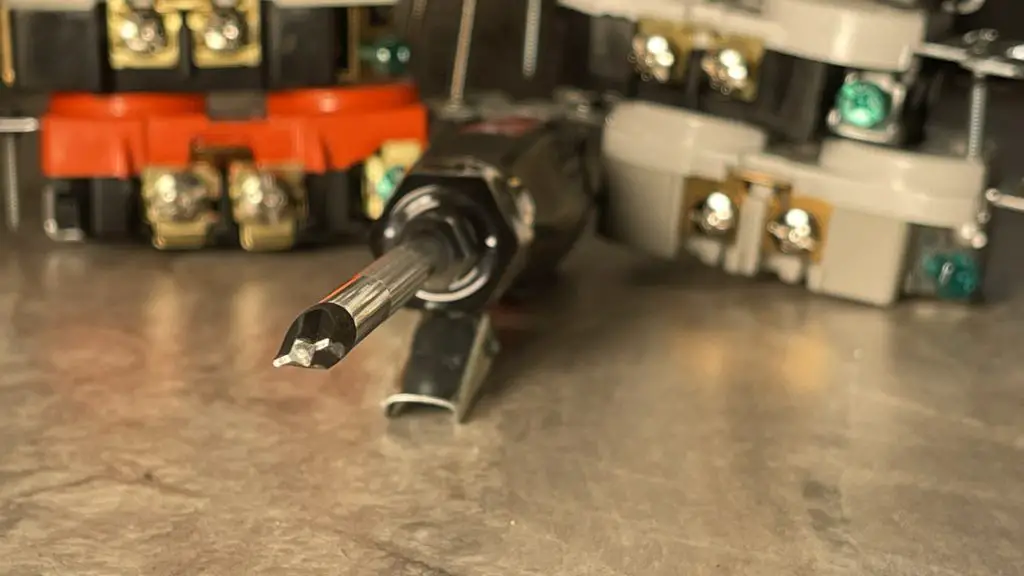
Let’s take a closer look at why the Phillips-head and flathead screwdrivers are not the best tool for the job and what other (better) options are available.
Wiring Outlets and Light Switches: The Best Screwdriver
The reason Phillips-head and slotted screwdrivers are not really suitable for wiring outlets and switches is one of those things that’s hiding in plain sight, right on the screw terminals themselves. After showing you the design of these screws, you’ll understand why there’s a better tool for this kind of electrical work.
Then I’ll share two different screwdriver options that I think are the best for DIY electrical projects around the house, explaining how they rectify the shortcomings of common screwdrivers.
Rather watch than read? Check out this 7-minute video.
DISCLAIMER: This video and description contain affiliate links, which means that if you click on one of the product links, I’ll receive a small commission.
The Best Screwdrivers for DIY Electrical Projects: Our Top Picks
Costs
The Milwaukee ECX costs $20-25 and the Southwire is around $15
Why Phillips-Head and Slotted Screwdrivers Come Up Short When Wiring Outlets and Light Switches
To illustrate the shortcomings of common screwdrivers with regard to wiring outlets and light switches, I’m going to backwire a Legrand commercial-grade receptacle. (Backwiring is where we insert the wire through the back of a commercial-grade receptacle and tighten the plate down with a screw terminal.)
I’ll insert the neutral wire on our silver terminal side, then get out my Phillips-head #2 screwdriver.
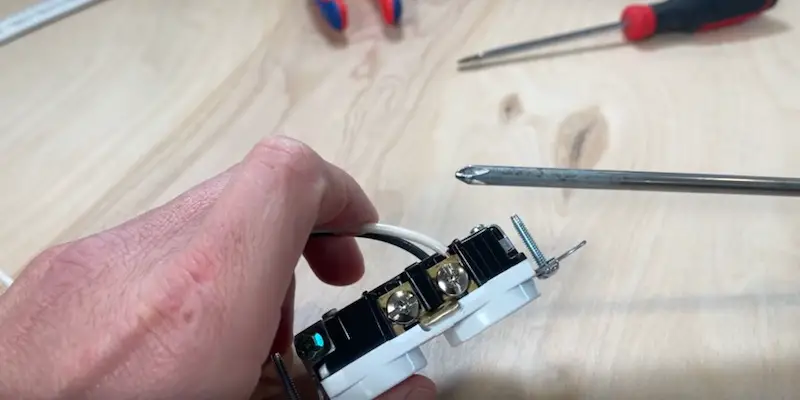
Note that this tool is in pretty good shape.
The benefit of a Phillips-head screwdriver is the ability to keep it on the screw with single-hand operation. It’s easy to keep this screwdriver on the terminal when making multiple revolutions.
Now I’m starting to tighten down the terminal and my Phillips wants to pop out (also referred to as “camming out.”) If this screwdriver had a worn tip, it would be escaping even more readily. Without more force pressing down, I can’t get much more torque on this screw.
For this reason, it’s not the best tool for the job.
Now for the slotted (flathead) screwdriver. This screwdriver is going to have more contact area, which will enable me to apply more torque and get a more secure hold on my wire.
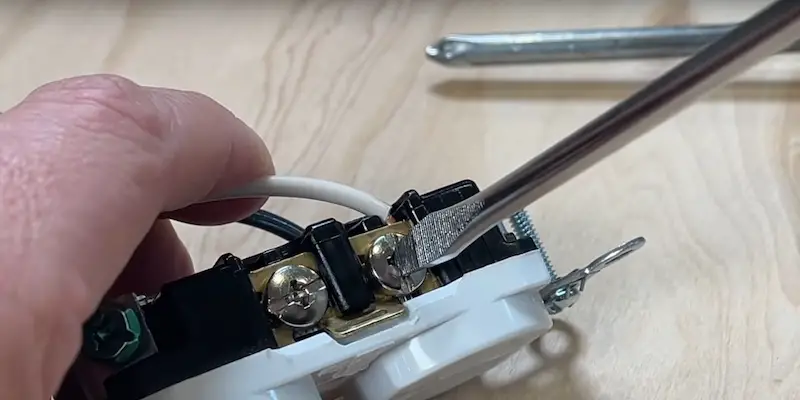
The shortcoming of a slotted screwdriver is that it’s not the greatest in single-handed operation because it tends to slip off the screw easily as you’re tightening. This can become an issue if you’re doing multiple outlets and you don’t want to have to fight with the screwdriver to stay in place as you do numerous rotations.
The Best Screwdrivers for DIY Electrical Projects: If You Don’t Want to Buy a New Tool
If a Phillips-head and a slotted screwdriver are all you have in your tool bag and you don’t want to buy any new tools, I recommend doing your initial rotations with a #2 Phillips to get the majority of the tightening done, then finish off with a slotted screwdriver to get the torque you need to fully tighten down the terminal and create the most contact on your wire.
The Best Screwdrivers for DIY Electrical Projects: Robertson and Hybrid
Now let me show you two superior screwdriver options. I think these are the best when it comes to screwdrivers for electrical work. Both are pretty reasonable in terms of cost.
The Robertson Square-Drive Screwdriver
The first screwdriver is a salute to our friends up in Canada. This is a Robertson screwdriver invented up in Canada and named after the inventor Peter L. Robertson, who also patented the socket-head screw in 1907.
The Robertson #1 fits perfectly in both the screw terminals and the mounting screws on a modern receptacle or light switch.
Looking up close, we can see that the Robertson #1 lines up perfectly with the center section of the screw terminal.
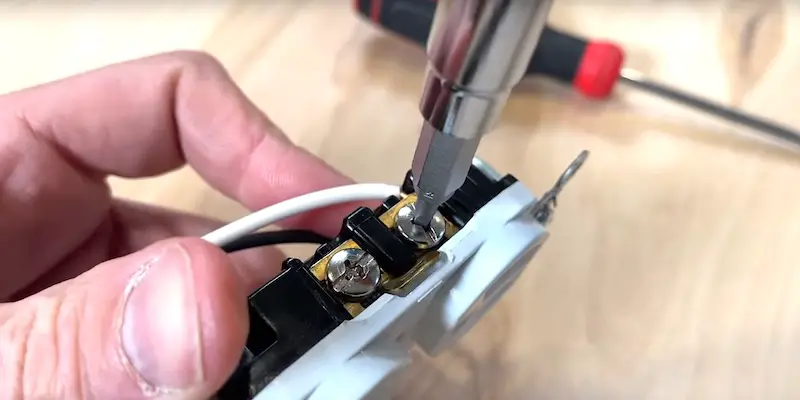
Although the center section has small grooves that can fit a Phillips-head, it’s actually designed for the square head of a Robertson.
With the Robertson, you get optimal one-handed operation because the tip locks into the interior of the screw. This also gives you great torque so that you can really tighten down the screw.
To finish the job, the same Robertson #1 will lock equally as well into the mounting screws of a light switch or receptacle. This means you don’t have to change tools, which saves time.
The Hybrid Screwdriver (Milwaukee ECX)
In the survey I took of our YouTube viewers, 10% said they use my top choice, which is a hybrid screwdriver. I think this is the best screwdriver for electrical work, especially when it comes to wiring outlets and switches. Of this type of screwdriver, my favorite is the Milwaukee ECX #1.
Why is the Milwaukee my preferred screwdriver? Simply put, it combines the best of both worlds. You have the square-drive Robertson #1 embedded into a slotted screwdriver.
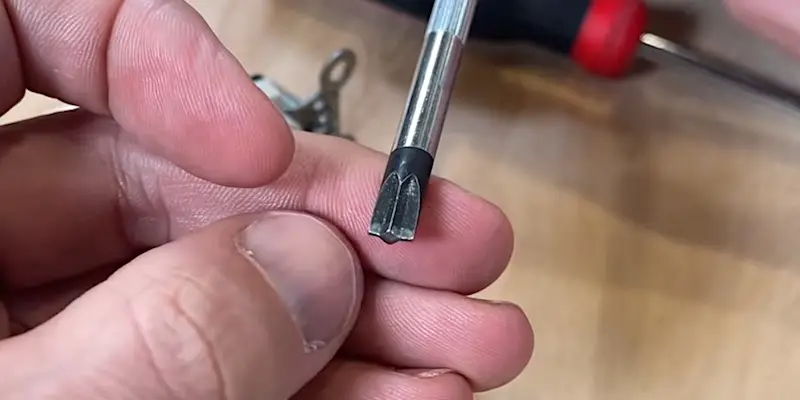
So not only does it give you excellent one-handed operation but it also gives you maximum torque from the additional contact of the slotted part of the tool so you can fully tighten down a screw terminal.
I’ve been using this Milwaukee ECX for about 18 months now and it’s by far my preferred tool for electrical work, particularly for outlets and switches, which is something I work with a lot.
I also have an ECX #2, which is just a little bit larger, but to be honest, I don’t use it that often. The ECX #2 comes in handy for circuit breakers and tightening down the screw terminal that holds your hot wire.
You can expect to spend $20-$25 for the standard Milwaukee ECX hybrid screwdriver like this:
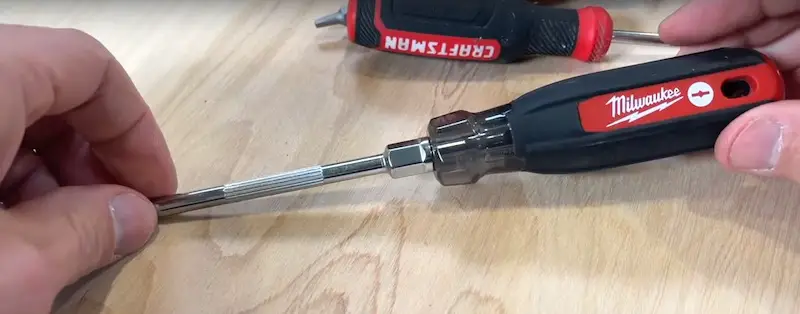
You can also get the Milwaukee ECX with insulation that goes all the way up the tool for a little more safety.
Going back to the Robertson (square-drive) screwdriver, my pick is this Southwire, which is a multi-bit screwdriver. It comes with multiple, interchangeable bits for different applications.
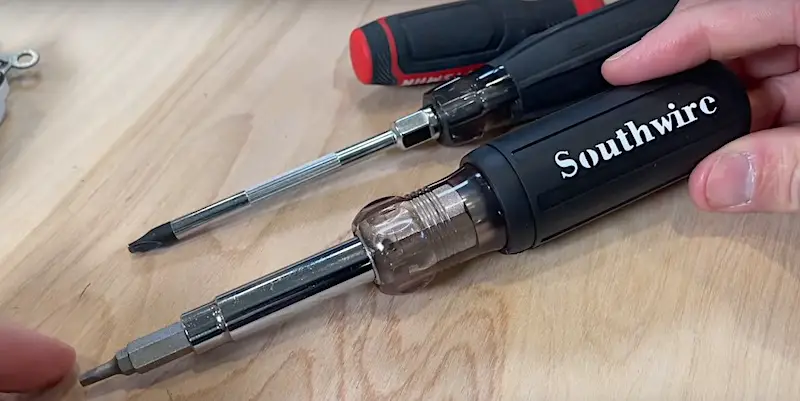
I’m not a huge fan of the multi-bit screwdrivers because they’re a bit bulky due to the fact that the grip contains all the bits, but you do get the most bang for your buck. This is obviously a good option if you’re doing a variety of things that require different drivers.
To Leave Comments and Questions
I’d love to know what you think! Do you use a Phillips-head or slotted screwdriver or are you one of those who think the world would be a better place if everything were just my for Robertson screwdrivers? Have you converted to the ECX and will probably never be going back, like I have?
Feel free to leave comments under the YouTube video.
Don’t forget to subscribe to our channel as we have weekly videos coming out to help you with your everyday home repairs.
DIY Electrical Projects: Related Videos and Articles
Check out our YouTube video, “Selecting the Best Outlet on the Market” to learn about my top pick for electrical outlets. In this video, I compare Legrand and Hubbell, and actually show you the internals of the outlet to illustrate why I prefer the Legrand commercial-grade receptacle for electrical projects in my rental properties, real estate flips, and my own home.
These other outlet-related videos and articles might also interest you:
- 10 Things You Didn’t Know About Outlets (video)
- Dangers of Speed Wiring | Why Back Wiring an Outlet is Best (article)
- How to Wire a GFCI Outlet (article)
- Why Use a Pigtail When Wiring an Outlet (article)
Thanks for joining me. We’ll catch you on the next one! Take care.




